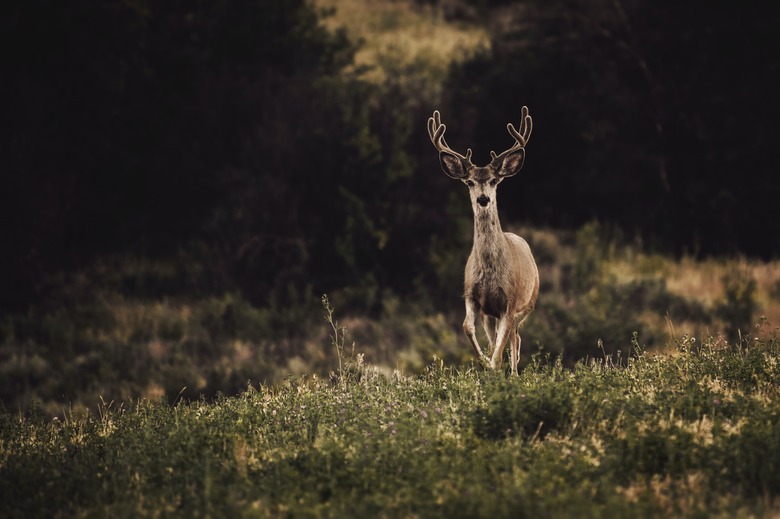How To Keep Deer Away From Vegetable Gardens
White-tail deer populations are common throughout much of the United States, and in many regions, they are known to feast on garden plants, including veggies as well as fruit trees and ornamentals. They readily consume many different plant parts, including fruit, leaves and even bark.
In places with a deer problem, fencing is the best way to keep deer out of your garden. Strategies such as spraying repellents and planting deer-resistant plant species may work to a lesser extent.
Keeping Deer Out of Gardens
In order to keep deer away from plants in your garden, you either need to create a barrier that they cannot penetrate, such as in the form of a fence, or make the plants in the garden unpalatable. The former is the only method that is reliable.
To keep deer away from your garden, you either need to create a barrier that they cannot penetrate or make the plants in the garden unpalatable.
Fencing
Fencing is considered by many experts to be the best way to keep deer out of your yard. Smooth wire or mesh fencing works well to keep deer out, though deer can and will try to knock them down, making it imperative that the fence be installed securely.
It is important that the bottom of the deer fence be no higher than 6 inches off the ground, as deer prefer to go under fencing to access garden plants than to jump. That said, deer can jump fences that are 10 feet high or shorter. That means tall fences are required in order for them to be effective. It is also important to completely enclose the garden on all sides.
Repellent Sprays
There are a number of deer repellent sprays that you can buy and apply to ornamentals in your garden during the growing season. It is also possible to make a homemade deer repellent spray with eggs, garlic powder, cayenne pepper combined with water, dish soap and cooking oil.
These sprays are intended to keep deer from eating plants by giving the plants an unappealing smell or taste. However, they are not regarded to be as effective as fencing and need to be reapplied frequently in order to keep deer at bay. It is also important to rotate the use of different sprays, as deer may eventually overcome their avoidance of any one spray.
If you are looking to keep deer off vegetable gardens, make sure any sprays you decide to use as deer deterrents are safe to use on edible crops before applying them.
Planting Deer-Resistant Ornamental Plants
While no species of plant is completely deer proof, there are some plants that deer dislike. Planting flower beds instead of vegetables can help keep deer at bay.
Tip
Choosing deer-resistant plants for your garden can help deter hungry deer from nibbling on them.
Some flowering garden bed options include marigolds (Tagetes patula), which are annuals, and perennials such as garden peonies (Paeonia lactiflora, zones 3 to 8) and daffodils (Narcissus spp., zones 4 to 8). Pansies (Viola × wittrockiana, zones 6 to 10) are a perennial often grown as an annual that are also considered deer-tolerant.
Shrubs that are not often damaged by deer include boxwood (Buxus microphylla, zones 6 to 9) and sweetshrub (Calycanthus floridus, zones 4 to 9).
References
- Walter Reeves: Deer – Control
- University of Massachusetts Amherst: Preventing Deer Damage
- PennState Extension: Gardening with Deer
- Missouri Botanical Garden: Tagetes patula
- Missouri Botanical Garden: Paeonia lactiflora
- Missouri Botanical Garden: Narcissus (group)
- Cornell Cooperative Extension Monroe County: Reducing Deer Damage to Ornamental and Garden Plants
- Missouri Botanical Garden: Buxus microphylla
- Missouri Botanical Garden: Calycanthus floridus
- Missouri Botanical Garden: Viola × wittrockiana

